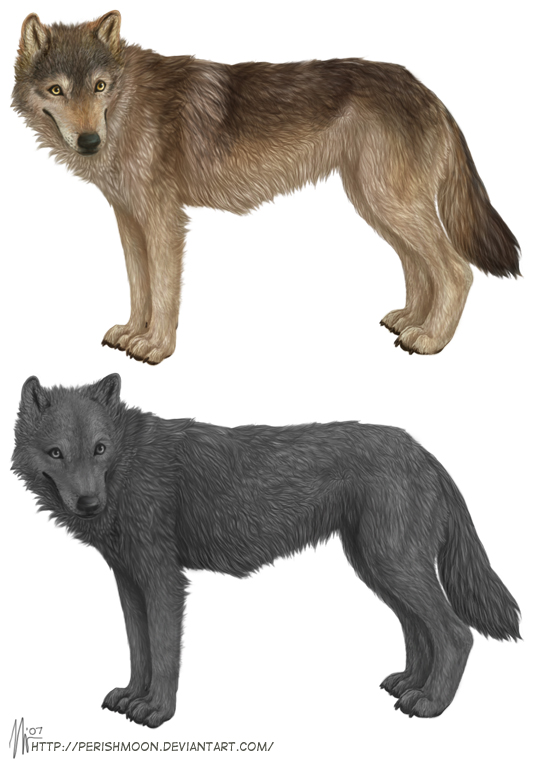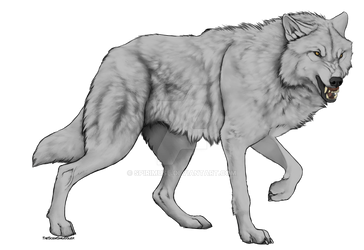ShopDreamUp AI ArtDreamUp
Deviation Actions
Description
I wish I'd put more thought into the sketch, for all the work that went into coloring. e.e;
Anyway, this was mostly just shading practice. It was originally part of a teaching exercise that I had to bail on. Since it doesn't match any of my characters' designs, I don't have much use for it. I thought I'd offer it up for general use. All I ask is that you follow these rules:
1. You may use the colored version and/or shaded base in collages, drawings, and reference sheets.
2. You may use this template as a reference for your own work.
3. You may edit the original template in any way.
4. You must keep the url to my gallery on whatever your final result is, and/or provide a link back to my gallery next to it.
5. Do not use this for commercial purposes.
6. Please send me a note, or comment here if you use this template (optional).
You can right-click and save the jpeg, or download the PSD-file with layers and the coloring example.
To Color:
This is by no means the only way to do it, but if you need ideas, here's what I did.
1. Select the shaded base, copy it onto two separate layers, and hide one. This gives you the option of starting over if you mess up.
2. Select the layer you're working on and go to Image>Adjustments>Brightness/Contrast. Adjust it to 48 brightness, 40 contrast.
3. Go to Image>Adjustment>Color Balance and increase Red and Yellow about 70%.
4. Now go to Image>Adjustments>Hue/Saturation and tweak the Hue and Saturation bars to get a light orange color. The next layer will be multiplied over this, so you want these shadows to be fairly light. Later you can change the Hue to get whatever ambiance your looking for. Experiment.
5. Make a new layer above this and tap ctrl-G to group it with the shading layer. Now you can color all over without going outside the lines of the base.
6. Set the layer to multiply.
7. Color on this new layer. Lighter colors usually work best.
The reason it starts out so dark is because there's an alternate method of coloring, where you up the color balance and mess with the hue and saturation of the shading layer. Use the lasso tool with lots of feathering to select specific areas and change the hue/saturation. This method uses only one layer.
Hope that helps! Let me know if you have any questions.
Anyway, this was mostly just shading practice. It was originally part of a teaching exercise that I had to bail on. Since it doesn't match any of my characters' designs, I don't have much use for it. I thought I'd offer it up for general use. All I ask is that you follow these rules:
1. You may use the colored version and/or shaded base in collages, drawings, and reference sheets.
2. You may use this template as a reference for your own work.
3. You may edit the original template in any way.
4. You must keep the url to my gallery on whatever your final result is, and/or provide a link back to my gallery next to it.
5. Do not use this for commercial purposes.
6. Please send me a note, or comment here if you use this template (optional).
You can right-click and save the jpeg, or download the PSD-file with layers and the coloring example.
To Color:
This is by no means the only way to do it, but if you need ideas, here's what I did.
1. Select the shaded base, copy it onto two separate layers, and hide one. This gives you the option of starting over if you mess up.
2. Select the layer you're working on and go to Image>Adjustments>Brightness/Contrast. Adjust it to 48 brightness, 40 contrast.
3. Go to Image>Adjustment>Color Balance and increase Red and Yellow about 70%.
4. Now go to Image>Adjustments>Hue/Saturation and tweak the Hue and Saturation bars to get a light orange color. The next layer will be multiplied over this, so you want these shadows to be fairly light. Later you can change the Hue to get whatever ambiance your looking for. Experiment.
5. Make a new layer above this and tap ctrl-G to group it with the shading layer. Now you can color all over without going outside the lines of the base.
6. Set the layer to multiply.
7. Color on this new layer. Lighter colors usually work best.
The reason it starts out so dark is because there's an alternate method of coloring, where you up the color balance and mess with the hue and saturation of the shading layer. Use the lasso tool with lots of feathering to select specific areas and change the hue/saturation. This method uses only one layer.
Hope that helps! Let me know if you have any questions.
Image size
533x769px 2.12 MB
Comments80
Join the community to add your comment. Already a deviant? Log In
angelwolfsrevenge.deviantart.c… this was so COOL!!

























![[FOR SALE] Natural Canine Base Pack](https://images-wixmp-ed30a86b8c4ca887773594c2.wixmp.com/f/ee476615-f778-4195-966d-84d5ca4a01ae/d7ys7f8-86bfd718-9d3f-4b45-aad2-dd79d4831df4.png/v1/crop/w_184)





![Wolf Point Adoptables [fundraiser] - OPEN](https://images-wixmp-ed30a86b8c4ca887773594c2.wixmp.com/f/233f75dc-2573-43fa-891e-22c99171084f/d9hj7ox-945bfacf-0bf7-481c-80a3-e3b704739701.png/v1/crop/w_184)


